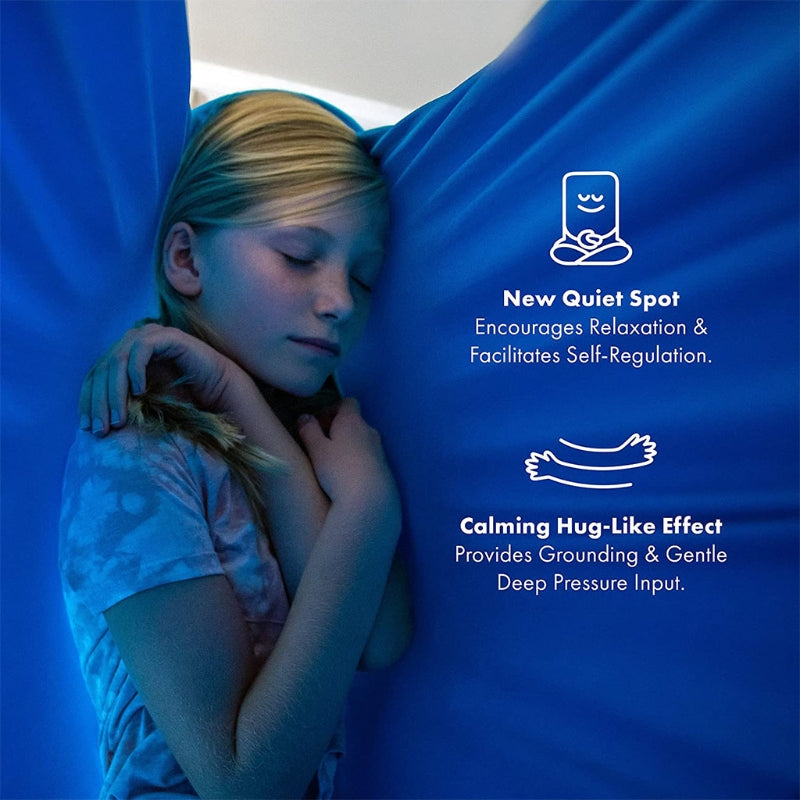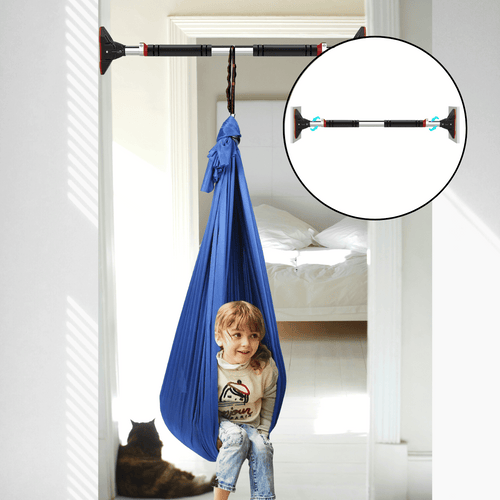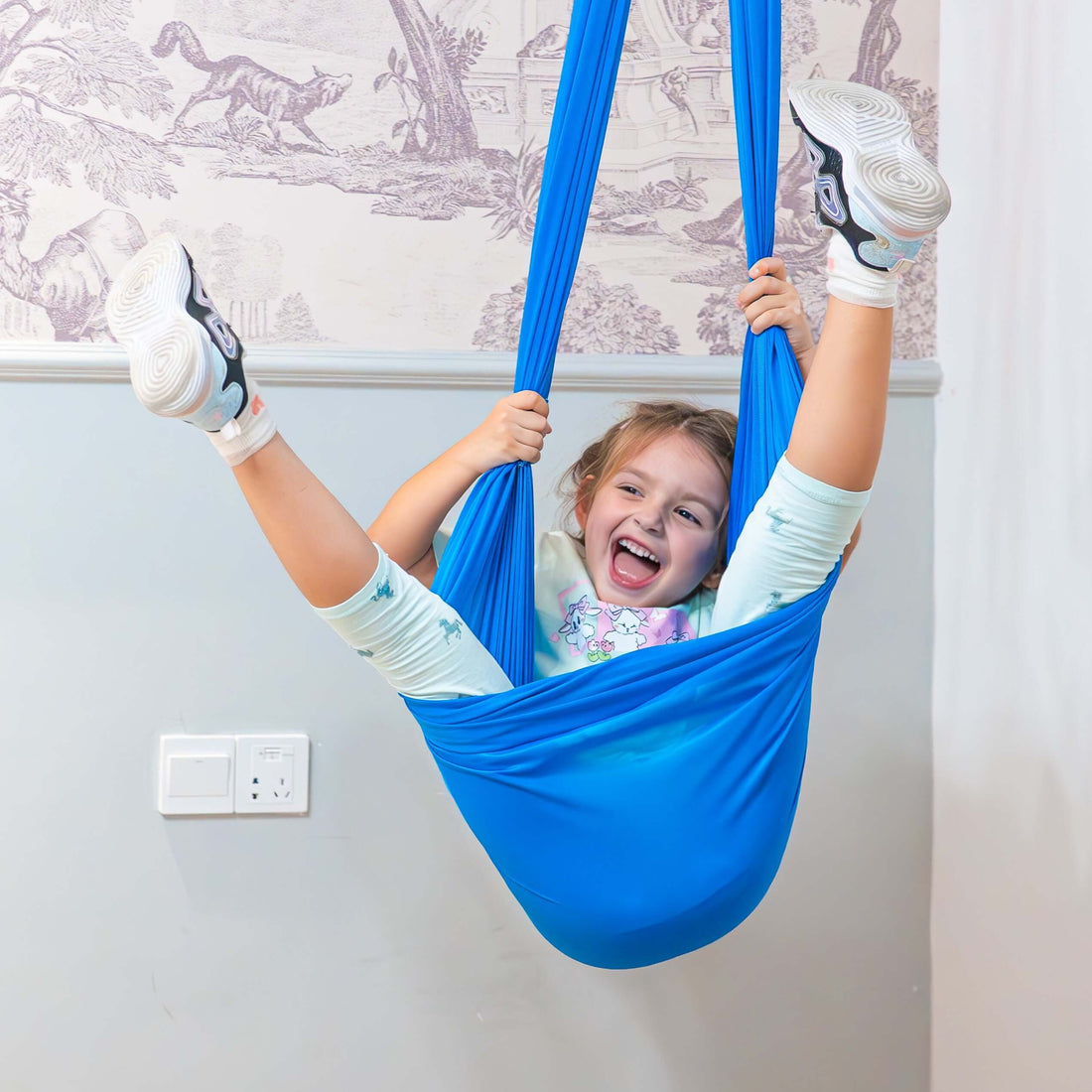Children with Autism Spectrum Disorder (ASD) often face challenges in sensory processing. Sensory swings are effective tools that help children with autism by providing the sensory input they need through swinging and spinning motions, enhancing emotional regulation and focus. However, the market is filled with various types of sensory swings, making it difficult to choose the right one. This guide aims to help parents and caregivers select the most suitable sensory swing for their child with autism by offering practical advice and professional insights.
Why Are Sensory Swings Beneficial for Children with Autism?
Sensory swings offer numerous benefits for children with autism in several ways:
- Balance and Coordination: Swinging and spinning motions help improve a child's balance and coordination, promoting sensory system integration.
- Emotional Regulation: The rhythmic motion of a sensory swing can help children relax, reducing anxiety and stress, and improving emotional stability.
- Focus and Attention: By providing necessary sensory stimulation, sensory swings can help children enhance their focus and attention.
- Body Awareness: Swinging and spinning can enhance a child’s awareness of their body, improving their body coordination and spatial perception.
Key Considerations When Choosing a Sensory Swing
When selecting a sensory swing, parents and caregivers need to consider multiple factors to ensure that the chosen swing meets the child’s specific needs.
1. Safety
Safety is the primary consideration when choosing a sensory swing. Ensure that the swing materials are sturdy and durable, capable of supporting the child’s weight and activities. Choose products that are safety-certified and quality-tested.
- Weight Capacity: Ensure the swing’s weight capacity exceeds the child’s weight. It is recommended to choose swings with a higher weight capacity to accommodate the child's growth.
- Installation Method: Choose swings that are easy to install and have high stability. Ensure the installation site is safe and free from obstacles.
2. Appropriate Age and Size
Different types of sensory swings are suitable for different ages and sizes. Choose a swing that fits the child’s current age and size, considering their growth potential.
- Size: Ensure the swing size is suitable for the child's height and build, providing enough space for movement.
- Age Range: Check the product description and choose swings that are appropriate for the child's age group.
3. Material and Comfort
The material and comfort of the sensory swing directly affect the user experience. Choose materials that are soft, breathable, and easy to clean.
- Softness: Choose soft, comfortable materials to ensure the child feels relaxed and comfortable on the swing.
- Durability: Ensure the material is durable and can withstand frequent use and cleaning.
4. Versatility
Some sensory swings have multifunctional designs, providing various sensory input methods. Choose swings that meet different sensory needs, increasing the variety and fun of use.
- Multiple Usage Modes: Choose swings that can be used in various ways such as swinging and spinning, providing rich sensory input.
- Additional Features: Some swings come with additional sensory stimulation features such as vibration and light effects, enhancing the sensory experience.
5. Portability and Adjustability
If you need to use the swing in different locations, choose one that is highly portable. Additionally, highly adjustable swings can adapt to different scenes and needs.
- Portability: Choose swings that are easy to disassemble and carry, convenient for use in various indoor and outdoor scenarios.
- Adjustability: Choose swings with adjustable height and swing amplitude to suit different needs and settings.
Common Types of Sensory Swings
- Hammock Swings: Provide a cocooning effect and a sense of security, suitable for children who enjoy being enveloped.
- Tire Swings: Ideal for children who enjoy spinning and swinging, offering various positions and play styles.
- Platform Swings: Provide stable support, suitable for balance and coordination training.
- Disc Swings: Suitable for 360-degree spinning and multi-directional swinging.
Product Recommendation: SensoryHarbor Sensory Swings
SensoryHarbor offers a range of high-quality sensory swings designed specifically for children with autism, catering to different ages and needs.
- Product Features: Made with premium materials, designed for safety and comfort, and versatile for multiple uses.
- User Reviews: Numerous positive user feedback highlighting significant benefits and real-life impact.
Explore our top sensory swing options:
- Sensory Joy Swing for Sensory Processing Needs
- Therapy Swing for Autism and Sensory Processing Disorder
- Hammock Swing for Kids with Special Needs
Conclusion
Choosing the right sensory swing is crucial for the sensory processing and overall development of children with autism. We hope this guide helps parents and caregivers make informed decisions when selecting a sensory swing, providing the best sensory experience and support for their child. With appropriate sensory input, children with autism can better manage daily challenges and improve their quality of life.
Visit SensoryHarbor for more information on our products and find the perfect sensory swing for your child.







